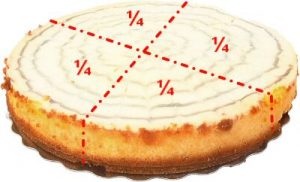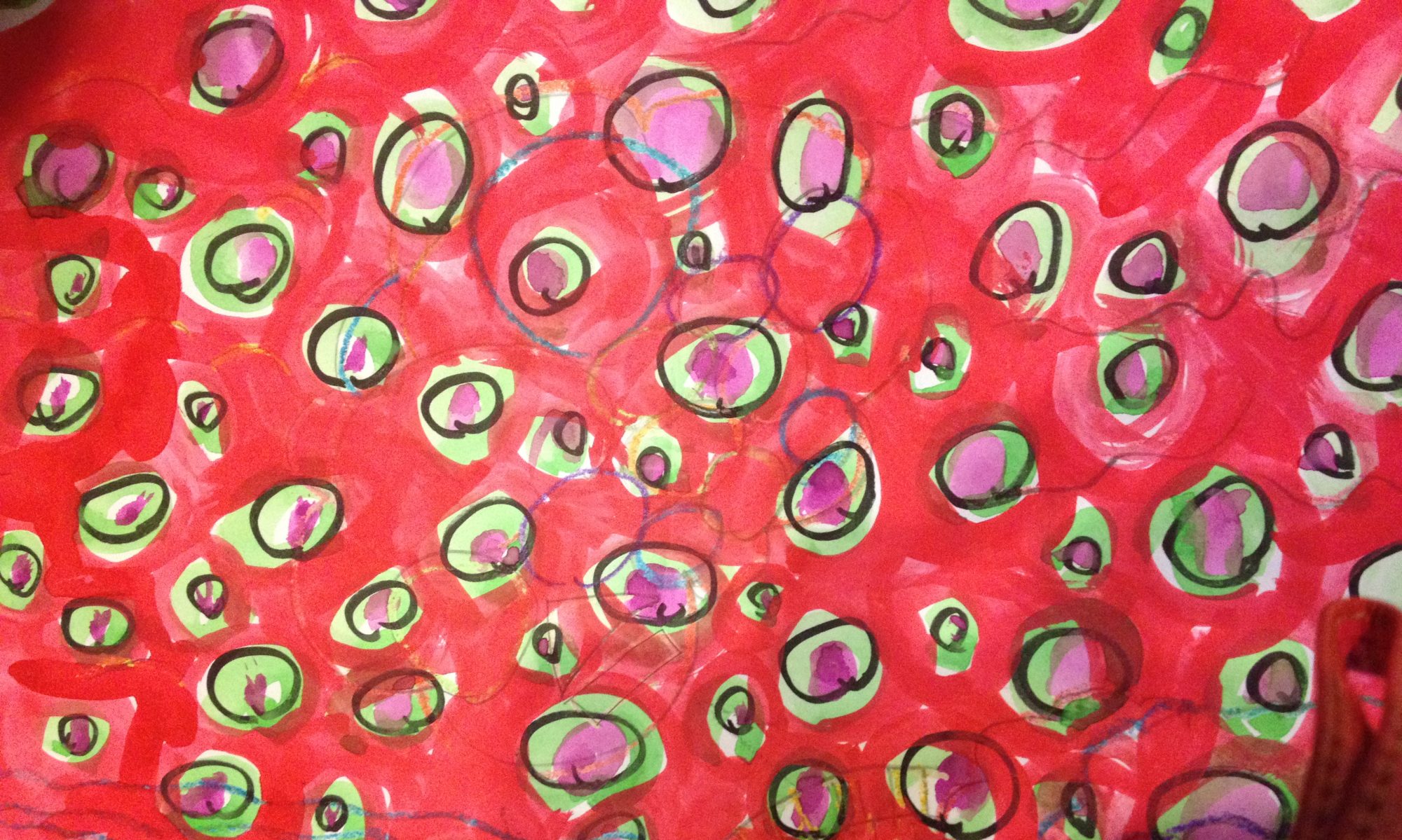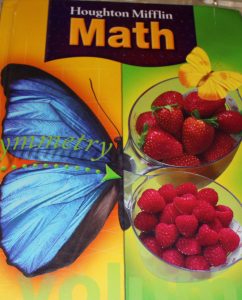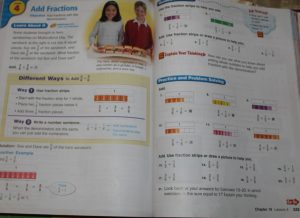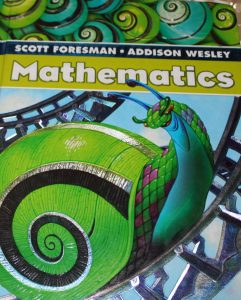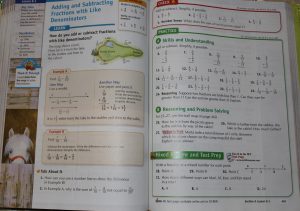My child works HARD to keep his grades pulled together in school. Like reading, Math is also very difficult.
We have extreme difficulty with the memory skills required to master the basic multiplication tables.. Even the basic addition facts are also fuzzy- just not concrete memories.
We work through the homework that comes home from a public school. Grade 6, I think this is all common core. A division problem, an absolute value problem, a couple of word problems, an area or perimeter problem, etc… we get a few pages of mixed math applications for homework on average; 3 times a week.
Some problems look like a foreign language to my son. I will ask him if the teacher went over the material; and I know he must have, but my son just looks at the problem as if it is written in another language.
Some problems he has memory of certain processes, he can recall how to manipulate the numbers and formulate answers. It is not easy at all. He will make simple mistakes like subtracting 6 from 13 and writing down a 8 or 9 or some other number.
He will think of the numerical answer, 13 for example. But sometimes, when he writes the number on his paper, the 13 comes out like a 15. He will see his mistake and then write-over the 13 to make a 15. But now… what he has for an answer looks like an 18 and he must erase his answer and start all over. = Frustration
He has had several years of supplemental math (& reading) instruction; I know he has used manipulatives and other visuals in learning math in the past. When I ask about math class as it is NOW, he tells me the teacher works many problems out on the board. T
Within the math classes that I teach… I use the website Math Antics and supplement extra practice with classroom workbooks or worksheets from the web. THERE ARE MANY COOL VISUALS, OR COMPUTER TUTORIALS THAT CAN BE USED TO TEACH OR SUPPLEMENT A MATH LESSON.
In a short visit I checked out the Math-U-See curriculum materials that many home school Moms turn to. They used 100 blocks, 10 blocks, 1’s etc… and other numerical combinations to really help the student visualize their math. I wonder if this is the right ‘curriculum’ to help my child master his numbers.
Personally, within my math class I use the video lessons from MathAntics. Even thought I teach adults, they have great visual lessons. I would post more screen shots; but I am not sure about copyright laws and do not want to offend. Head on over and check those out.
Good Luck with the Math Instruction!!